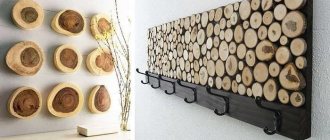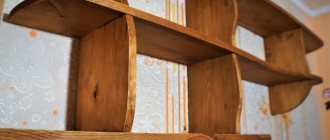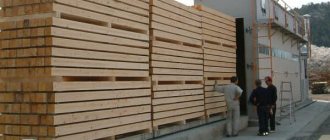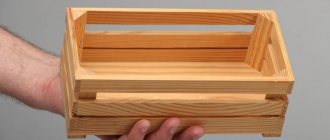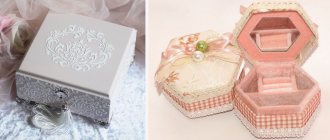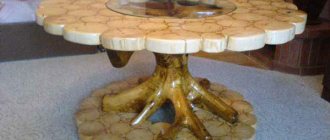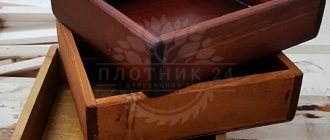What tools are needed to assemble barrels?
Having decided to make your first barrel, keg or tub, you need to equip your workplace and stock up on the necessary tools, fixtures, and available materials. In addition to the usual carpentry kit, you will need to stock up on special cooperage equipment, fixtures and tools. This:
- carpentry workbench equipped for cooperage;
- cooper's long jointer, circular humpback plane;
- a device for planing the edges of the boards from which the product is assembled);
- devices for tightening rivets (frame machine-gate, chain tie, post gate);
- plow, stapler, stapler;
- hand-made patterns and templates;
- metal or wooden clamps for assembling the barrel frame;
- morning maker (a device for cutting a morning groove into which the bottom of the product is inserted);
- heels (metal, wood, combined), tension for hoop;
- cooper's bracket.
Fixtures and measuring instruments
It should be taken into account that coopers make a significant part of the devices and tools themselves, “to suit themselves”, ensuring that the handles of the tools are held in the palm like a glove, and that the machines and workbenches are of the same height.
On the left is a two-handed, on the right is a one-handed morning drill and how to work with it
Making metal hoops for tubs
The cooper has to deal with both wood and metal, because the hoops that hold the dishes together have to be made independently from a metal sheet. But it’s easier to make hoops from hot-rolled steel strip. To do this you need:
- Determine the perimeter of the tub at the location of the hoop, add double the width of the strip to it.
- Using a hammer, bend the strip into a ring, placing the ends of the strip overlapping. Drill or punch 2 holes with a diameter of 4-5 mm, install steel rivets.
- Flare one edge of the hoop from the inside with hammer blows.
Frame Assembly Steps
To make a small barrel at home, two hoops are enough, corresponding to the perimeters of its upper and lower parts.
Types of tubs
Different types of wooden tubs are used in households.
Some of them are used exclusively in cooking and for storing food, others - as bath accessories. Wooden tubs come in the following types:
- Shayka is a large wooden tub with two handles. It is impossible to imagine swimming in a Russian bath without it. It is used for collecting and storing hot or water. Wood retains heat well, so water stays hot for a long time;
- A tub is a small wooden tub, 3-5 liters in volume, with one handle. The tub is also classified as a bath accessory (they carry water, douse themselves);
- A vat is a large tub, with a volume of 100 to 2000 liters. Mainly used as a font or for storing large volumes of water;
- A jug is tapered at the top, often with a tap located at the bottom side or in the bottom. Typically used for storing and dispensing kvass, beer or sbiten;
- A tub for pickles is a wooden bucket, tapering at the top with a lid-oppression. Used as a container for sauerkraut, pickling vegetables and mushrooms, and soaking apples. Depending on the type of wood used: aspen, oak or linden, the taste and aroma varies;
- Plant tub - this container is used as a pot or flower bed into which soil is filled and a plant is planted. It is purely decorative in nature, therefore low-quality and even defective products are often used for such purposes,
Proven sauerkraut recipe
Prepare the heads of cabbage, remove the top frayed leaves, remove the stalk. Measure out the required amount of coarse salt and other additives. Carrots are washed, peeled, cut into rings or strips, and grated. Grated carrots will give the finished cabbage an orange tint.
The head of cabbage is cut into two halves or more, based on the size and convenience of shredding in the future. You should chop into thin strips, placing the knife across the head of cabbage. For ease of slicing, use a chef's knife or a paring knife.
The last kitchen tool should be used carefully; novice housewives need to be careful, as they can easily get hurt. Using a chopping knife, the product turns out to be quite small chopped sizes
Do not chop the head of cabbage too thinly; narrow strips will subsequently not have a pleasant crunch and strength.
in the photo - cutting carrots for sauerkraut
in the photo - cutting cabbage for pickling
Place the shredded cabbage in a large cup (the fermentation container will be separate) and add salt, add carrots, and mix with your hands until the juice comes out. Place in containers for fermentation (jars, buckets, basins, etc.) in small layers, carefully compacting by hand or with a wooden masher until juice forms. When one layer is laid, additional ingredients (cranberries, dill, lingonberries, etc.) are laid on top. Alternating layers, fill the container completely, to the very top.
On the laid cabbage we place clean leaves from the heads of cabbage that remained during cleaning, and place a weight on top. Use a wide plate or dish, turn it upside down, place a large stone or place a three-liter jar full of water. The juice released from the cabbage is not drained when installing the load. If you ferment in jars, do not cover them with lids, just place them on top of the neck. During the fermentation process, to collect excess juice, place suitable sized dishes under containers, jars, and basins.
Assembling the tub
Making tubs with your own hands does not involve making all the hoops at once. First you need to make the middle ring. After it has been made from a strip of hot-rolled steel, 3-5 cm wide, the hoop is placed vertically on a clean wooden base. About 6 rivets are placed inside it, one of which (far left) is clamped with a clamp. After this, we install the remaining blanks and carefully lift the structure. They will only fit snugly with careful fitting and care.
Next, we make the remaining hoops and stuff them onto the product. The final touches are internal processing. Using a plane with a false blade and a chisel, you need to make a chamfer inside the lower end, removing 1/3 of the thickness of the workpiece. Next, process the end part of the frame and half-fill the upper end.
You might be interested in our tubs
- for test
- oak
- fake
Preparation of rivets
To bring the workpieces into proper shape, they must be planed with a plane to equalize their thickness. The inner side is planed using sherhebel, and then divided in half lengthwise with a pencil. This is necessary for trimming the workpiece using a hacksaw with fine teeth.
Using a jointer, both the outside and sides of the workpieces are finished. The correctness of actions is checked using a pre-prepared pattern. It is made focusing on the lower hoop of the product. Ideally, the template will fit snugly to the sides and front. Please note that one hundred strict sides cannot deviate from the lines that divide the workpiece in half.
To achieve a cone-shaped product, it is necessary to strictly observe the proportions: the width of the riveting at the bottom should be greater than at the top.
Preparation of rivets
The reliability of the structure will depend on the quality of the riveting blank, so the most suitable are blanks from logs of sawn wood, chopped with an ax. For barrels, the most common wood choice is oak, as it splits easily in a radial direction. The process of preparing staves from different types of trees is practically the same; a single-row or double-row knockout method is used. For large logs, a two-row method is used, and for thin logs, only a single-row method is used.
The procedure for cutting out rivets is as follows:
- The ridge must be carefully split in half so that the split line runs strictly through the center of the workpiece.
- Each block must be split in two to obtain 4 equal parts.
- Next, you need to split the wood for the workpiece in half again to make 8 equal parts. Usually for small logs this is quite enough. It is 1/8 that will become the riveting blank.
- If the ridge is thick, double-row cutting is used, i.e. each of the 8 parts splits into 2 equal parts along the growth rings.
- The resulting logs must be split in the radial direction. The result will be 1-2 blanks of smaller size and 2-5 for blanks of larger parameters.
- Next you need to cut off the wedge-shaped protrusions and young wood from the bark side. Only after this can the workpiece be dried in an open area or resort to artificial drying.
Vases made from car tires. Step by step instructions
To decorate your garden plot, you can also use almost waste materials, for example, old car tires. To make flowerpots from tires with your own hands, you should select the starting material of the required size. Winter non-studded tires, which are softer and thinner, are best suited for creating carved products.
DIY flowerpots made from tires. Photo
Let's look at how to make a flowerpot out of tires with your own hands, similar to a flower. To do this, first draw an outline on the side of the tire with chalk.
Next, the details are cut out figuratively along this contour. It is convenient to cut with a jigsaw or shoe knife. A detailed description of the stages is discussed in the video.
When the petals are cut out on the tire, small longitudinal cuts are made. They are located at a distance of five or ten centimeters from each other and facilitate the process of turning the tire out.
It is not easy to unscrew the product. This requires physical effort, but after at least a small section is turned out, the process speeds up.
After this, all that remains is to decorate the finished product. There are other options for making flowerpots from tires with your own hands.
What tools are needed?
To make wooden barrels with your own hands, you need to purchase a certain list of tools and accessories:
- workbench for carpentry;
- cooper's jointer. You need to choose a longer one;
- circular humpback plane;
- devices for planing the edges of boards;
- frame gate machine (for tightening rivets);
- chain tie;
- post gate;
- plow;
- stapler and stapler;
- patterns and templates. Determine the shape and dimensions of the barrel being manufactured;
- clamps made of metal and wood;
- morning. Necessary for cutting the morning groove into which the bottom is inserted;
- heels made of metal, wood or combinations;
- tension for the hoop;
- staples for cooperage;
- planes and hatchets of different sizes.
Did you know? It is assumed that barrels were invented by the Celts, although the ancient Greek historian Herodotus in the 5th century BC. e. mentioned palm wood barrels.
For ease of operation, machines and workbenches are installed according to height.
What you need to know to make cooperage products
A distinctive feature of cooper's ware is that it is assembled from wooden planks prepared in a special way, called rivets (otherwise known as frets). The shape and dimensions of the product are completely determined by the configuration of the planks, which are pre-made by the cooper. And the consumer qualities of wooden containers depend on the type of wood used.
Therefore, it is not enough for a cooper to simply be able to master the tools perfectly. He must feel the “soul” of the tree and know the properties of each type of wood from which he plans to make this or that household item.
Staves are the main element for making a barrel
An experienced cooper will not make an oak barrel for storing honey - when stored in it, the honey will darken and acquire an unusual aroma. But oak barrels are indispensable for aging wine and other alcoholic beverages: oak wood gives them new aromas and flavor shades.
The second element, without which cooperage products are unthinkable, is a hoop that holds the elements, tightens them tightly, thanks to which wooden barrels do not leak. Hoops are made of metal and wood. There is an opinion that metal hoops are stronger, and the hassle of making them is much less than with wooden ones. However, some craftsmen think differently and make the most beautiful products using wooden hoops.
Planter on wooden hoops
Make your own garden flowerpot at home
You can plant bushes and small trees in a wooden tub. You can paint it any color. Your homemade garden planter will be equipped with foam insulation, so there will be no need to insulate your plants for the winter. Remember, the volume of soil in the tub should be 2 times the volume of the root of the bush or tree.
In addition, there should still be a 15-centimeter layer of drainage at the bottom, which serves to maintain moisture. Boards must be treated with wood impregnation for outdoor use. See how to make your own garden flowerpot step by step:
STEP I - Making the base of the wooden tub
Lay out the support boards perpendicular to the bottom boards. They should protrude beyond the bottom to a length equal to the thickness of the boards of the walls of the tub, since they will later become supports for them.
STEP II - Installation of the side walls of the flowerpot
Connect the boards using corners, which will serve as walls for a garden flowerpot. One end of each corner should reach the edge of each wall.
STEP III - Connecting the walls and bottom of the wooden tub
We drilled two or three drainage holes in the bottom. Water will drain through the tubes passed through them. Place the walls of the tub on the previously prepared bottom.
STEP V - Insulate the tub with foam plastic
Lay foam plastic inside the tub, and place its edges on hot glue. Holes were drilled in the foam covering the bottom, matching the previously drilled ones. Place PVC pipes in them.
STEP VI - Laying garden film
We put garden film in the tub, which will protect the boards from moisture. Attach it to the edges of the tub with staples. Fill the gaps around the tubes with silicone.
STEP VII - Installation of the garden flowerpot edging
Screw the edging to the top of the side walls. All of our tubs are ready to use.
We put the bottom
To install the bottom, you need to make a groove at a distance of 5 cm from the bottom. A chamfer is removed from both sides of the groove, and then the required circle is drawn on the bottom shield. It is created using special metal pins or nails. For them you need to make preliminary holes in the workpieces.
A bow saw is used to cut out the bottom. The bottom is placed on a workbench and planed clean on both sides at the end. Next, draw a line in the middle, the thickness of which is about 0.3 cm. Draw circles on both sides, the radius of which will be about 2.5-3 cm. You need to chamfer along these boundaries.
After this, we put the bottom in a tub. To do this you need to knock down the hoop a little. Next, insert the base into the groove and return the hoop to its place. The main thing is to make sure that there are no gaps between the bottom and the gaps. You also need to make several jambs on which the load will then be installed.
A little time and effort, and your tub is ready!
DIY tub drawings
DIY tub, drawings and construction diagram.
Cooperage product in the form of a truncated pyramid, the base of which is a regular polygon. It is made from wooden staves of oak, aspen or linden. You can ferment and salt vegetables in it, as well as soak fruits.
The tub consists of several components:
- Wall rivets.
- Bottom rivets.
- Metal hoops.
The construction of the wall riveting is shown in the figure
d1 – circumscribed circle diameter of the upper polygon d2 – circumscribed circle diameter of the lower polygon h – height of a regular truncated pyramid φ – angle that determines the number of sides of a regular polygon a1 – side of the upper polygon a2 – side of the lower polygon
By substituting the given dimensions:
φ = 15° (number of rivets 360 / 15 = 24 (pcs.)) a1 = 50 (mm) a2 = 45 (mm) h = 400 (mm)
we get the riveting of the product shown in the drawing
Construction of bottom rivets.
About waxing
If the product with moonshine is left in a warm place, then intense evaporation of the distillate will occur through the walls. To prevent this, you need to wax a hand-made oak barrel. To do this, place beeswax in a water bath and gradually melt it, while filling it with linseed oil and mixing thoroughly. Next, using a soft and wide brush, the composition is applied to the surface of the barrel. In order for the wax to spread evenly and better saturate the wood, it needs to be slightly heated with a hair dryer. If you don’t have this tool, then you can limit yourself to a regular hairdryer.
Wooden tub: how to choose and use on the farm
Wooden tubs have been used in households for a long time. Cucumbers and cabbage were salted in them, apples were soaked, kvass was prepared and stored. Unlike glass and metal containers, products in a wooden tub over time acquire an incomparable taste and aroma. In addition to salting and fermentation, they also store fresh vegetables and fruits, cereals and sugar.
How are they classified?
With all the variety of shapes and sizes, tubs are most often classified according to the following parameters:
- Volume;
- Shape and proportions of the container;
- Tree, its species and variety. The tubs are made of oak, linden, aspen, pine;
- The material from which the hoops are made (stainless steel, galvanized or bast);
- Purpose. They can be intended for storing food, pickling, or as bath accessories;
- The presence of handles, faucets or pressure.
Not only the price, but also the service life of the product, as well as the area of application of the reel on the farm, depend on the listed parameters.
For example, pine tubs are not used for salting or storing food substances.
Types of tubs
Different types of wooden tubs are used in households.
Some of them are used exclusively in cooking and for storing food, others - as bath accessories. Wooden tubs come in the following types:
- Shayka is a large wooden tub with two handles. It is impossible to imagine swimming in a Russian bath without it. It is used for collecting and storing hot or water. Wood retains heat well, so water stays hot for a long time;
- A tub is a small wooden tub, 3-5 liters in volume, with one handle. The tub is also classified as a bath accessory (they carry water, douse themselves);
- A vat is a large tub, with a volume of 100 to 2000 liters. Mainly used as a font or for storing large volumes of water;
- A jug is tapered at the top, often with a tap located at the bottom side or in the bottom. Typically used for storing and dispensing kvass, beer or sbiten;
- A tub for pickles is a wooden bucket, tapering at the top with a lid-oppression. Used as a container for sauerkraut, pickling vegetables and mushrooms, and soaking apples. Depending on the type of wood used: aspen, oak or linden, the taste and aroma varies;
- Plant tub - this container is used as a pot or flower bed into which soil is filled and a plant is planted. It is purely decorative in nature, therefore low-quality and even defective products are often used for such purposes,
Preparation
In order for the reel to last as long as possible, it needs special preparation before you start using it. To prepare the container, you need to perform the following steps on it:
- Pour boiling water over. After this, fill with cold water to the brim and leave for at least 3 days so that the rivets swell and the tub becomes airtight. If the barrel is of large volume, then increase the holding time;
- Drain the cold water and fill 1/3 with boiling water. Soak a birch or oak broom in this boiling water. Use the same broom to clean the walls inside the container. This is necessary in order to disinfect the tub.
- Cover with a lid and wrap with a towel or blanket.
- Drain the cooled water.
Store unused containers in a dark and cool place. The container must be empty.
Some housewives, fearing that the tub will dry out and lose its seal, fill it with water during storage. This leads to the appearance of mold and mildew.
Features of the operation of the pickling tub
Pickling tubs have their own operating characteristics. Since food products are stored in this container, mold or rot may appear on the walls of the container, even if it is washed well after use.
In addition, when fermenting there is practically no water in the tub. This can lead to drying out and loss of seal of the container. To prevent this from happening, you need to follow some tricks:
- Oak tubs need to be soaked for at least a month to remove excess tannins.
- Aspen or linden – 1-2 weeks;
- Before laying, pour boiling water over the inside of the tub to disinfect it;
- Placement of products into a large container (30 liters or more) should be done where the tub will be stored. Since after filling it will be very difficult to move, and during transportation it can be seriously damaged;
- The container must be filled to capacity, otherwise mold will appear on the walls and in the space free from food;
- Store unused containers in a dark and cool place. The container must be empty. Some housewives, fearing that the tub will dry out and lose its seal, fill it with water during storage. This leads to the appearance of mold and mildew. To prevent the tub from drying out, it must be lubricated with vegetable oil before long-term storage;
- The tub cannot be placed on the ground without placing bricks, a board or a sheet of iron under it, otherwise it will quickly begin to rot, since the earth, especially in the basement, is very wet.
Containers made from spruce or pine are not suitable for culinary delights, since their wood is very resinous, and the smell and taste imparted to the products is not very appetizing.
A container made of aspen is suitable for sauerkraut. In an aspen tub, the cabbage turns out crispy and aromatic. But salting mushrooms, vegetables or meat is best done in an oak or linden container.
Buy or make it yourself
Wooden tubs are inexpensive. However, some home craftsmen do not give up trying to make such a complex type of utensil with their own hands.
But making a tub is not so easy. It is necessary not only to select the right logs, but also to cut them into boards to make rivets from them. It is impossible to do this with an ax or saw.
Manufacturing tub parts is a technologically complex process. The rivets must be even and smooth. All parts fit tightly and precisely to each other. This can only be done with the help of specialized equipment and tools, as well as extensive experience working with them.
By purchasing a ready-made product of factory quality, you save your time and money.
Main details and manufacturing principle
It may seem that the task of becoming an amateur cooper is too difficult, and one can only quietly dream about how to make a barrel out of wood. But if you're serious about making your dream come true, it's time to roll up your sleeves.
First of all, you need to choose the type of product that will become your first-born. With all their diversity, there are three types: with a conical, parabolic and cylindrical frame. As already mentioned, the shape of a cooper's product is completely determined by the configuration of the staves from which it is assembled - the more complex the shape, the more difficult it is to make the treasured wooden barrel.
Impact of configuration on product type
The figure above shows the types of cooperage utensils and the corresponding types of staves:
- Grooved, made in the form of a quadrangle, the long sides of which have the form of parabolic curves. Used in the manufacture of cooperage utensils with convex sides: barrels, kegs. Such rivets are the most difficult to make, which determines the complexity of making barrels in general.
- The base of the container is a cylinder. They are easy to manufacture because they are rectangular grooved boards. It is easy to make such frets, but it is difficult to connect them with hoops with a constant diameter. When the wood dries out, the hoops no longer hold the rivets. Therefore, cylindrical cooperage products are practically never found.
- Utensils are made from straight grooved frets in the shape of an elongated trapezoid, the frame of which is a truncated cone. When the hoop is stuffed onto the wide part of such containers, a very strong tightening of the rivets is achieved. This feature has found application in the manufacture of various tubs, tubs, and jugs.
A mini-bath is built using the same principle.
For the first experiment, it is advisable to choose the manufacture of a small tub, commonly called a barrel.
How to make a pickling tub with your own hands?
A classic pickling barrel is a product designed for storing and transporting products. Apples, mushrooms, and tomatoes are salted and soaked in them. They sauerkraut and pickle watermelons and cucumbers. There are several types of barrels. Even though they differ in shape, their purpose is the same.
- A tub is an ordinary barrel of a familiar shape.
- Kubelchik are cone-shaped barrels.
- Sudzina - elongated barrels.
Stone
Flowerpots made of stone are highly durable and durable. They are very decorative and are able to retain moisture in the soil well. Their large mass allows them to remain stable, but deprives them of mobility. Choose the location of the stone flower girl in advance.
Making a stone flowerpot by hand requires skill, patience and the appropriate tools. Below is a master class that should help a beginner cope with this task.
When choosing a stone, it is better to give preference to sandstone or limestone.
You will need:
- bushhammer;
- bit;
- a piece of sandstone or limestone;
- support for installing stone;
- pencil;
- brush;
- Bulgarian;
- Grinder.
Manufacturing process:
- Draw the outline of the recess in which the plants are supposed to be planted. To prevent the edge of the flowerpot from collapsing, leave 50 mm between the line and the border.
- Drill out the hole using a hammer and chisel.
- Use a brush to sweep away stone chips and dust.
- Using a grinder, make cuts, gradually deepening the tool along the edges.
- Make a drainage hole in the resulting bottom.
- Sand out rough grooves.
Stone processing is made easier by using special power tools, see video.
It is much easier to make flower modules decorated with smooth river stones.
You will need:
- river stones;
- plastic pot;
- glue gun
Manufacturing process:
- Turn the pot upside down.
- Using a glue gun, gradually attach the stones to the walls. Try to select them so that there are no empty gaps.
Flowerpots decorated with pebbles
There are many different ways to make your own flowerpots. Some are easy to make from scrap materials, others will require more preparation and experience. When creating a flower girl yourself, you can use your imagination and develop a unique design that will suit your personal tastes.
Author of the article: Elizaveta Baryshova



